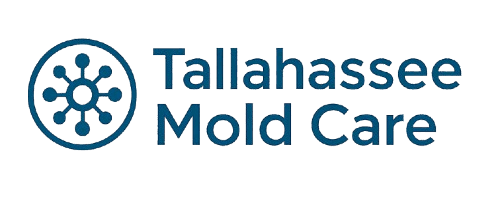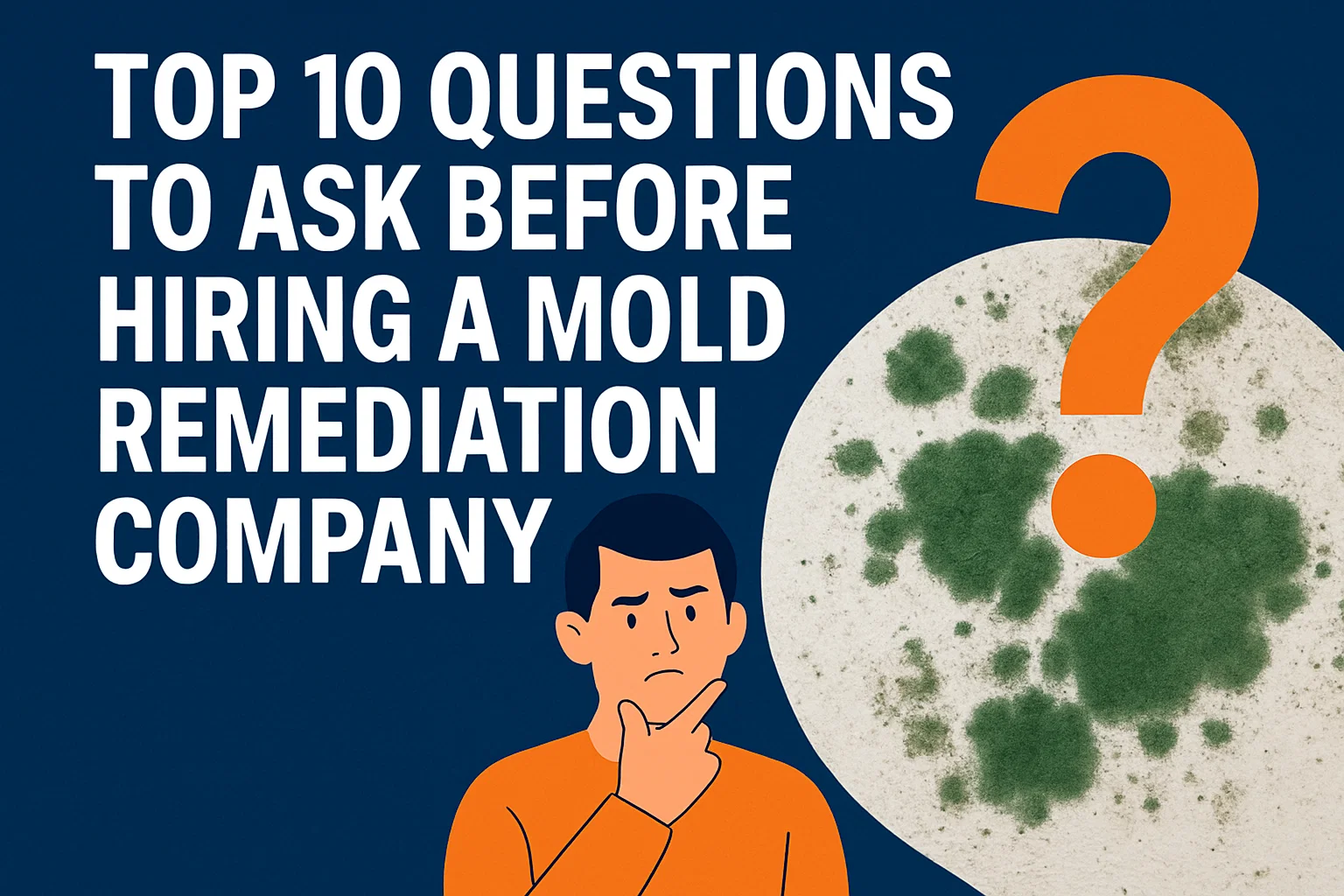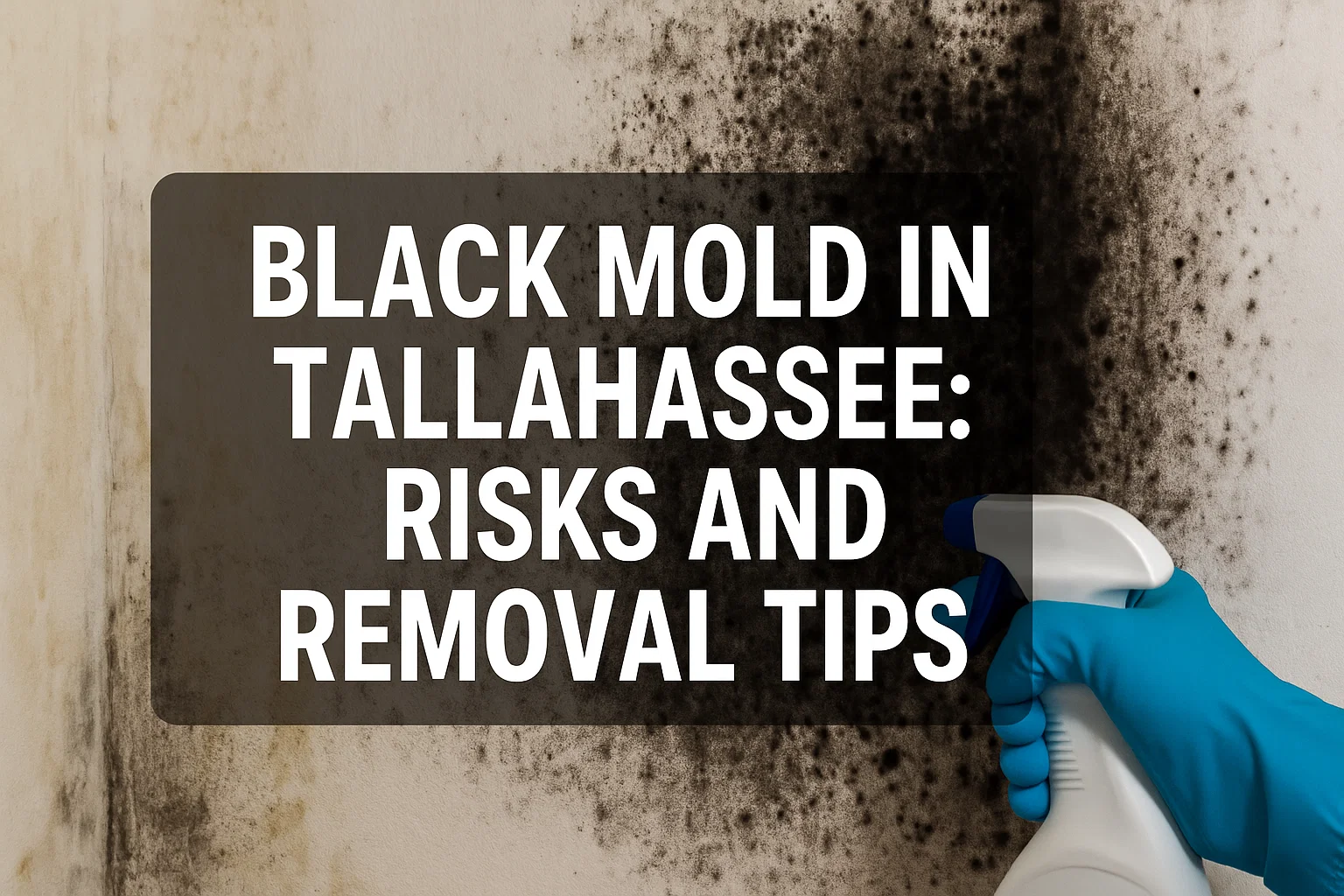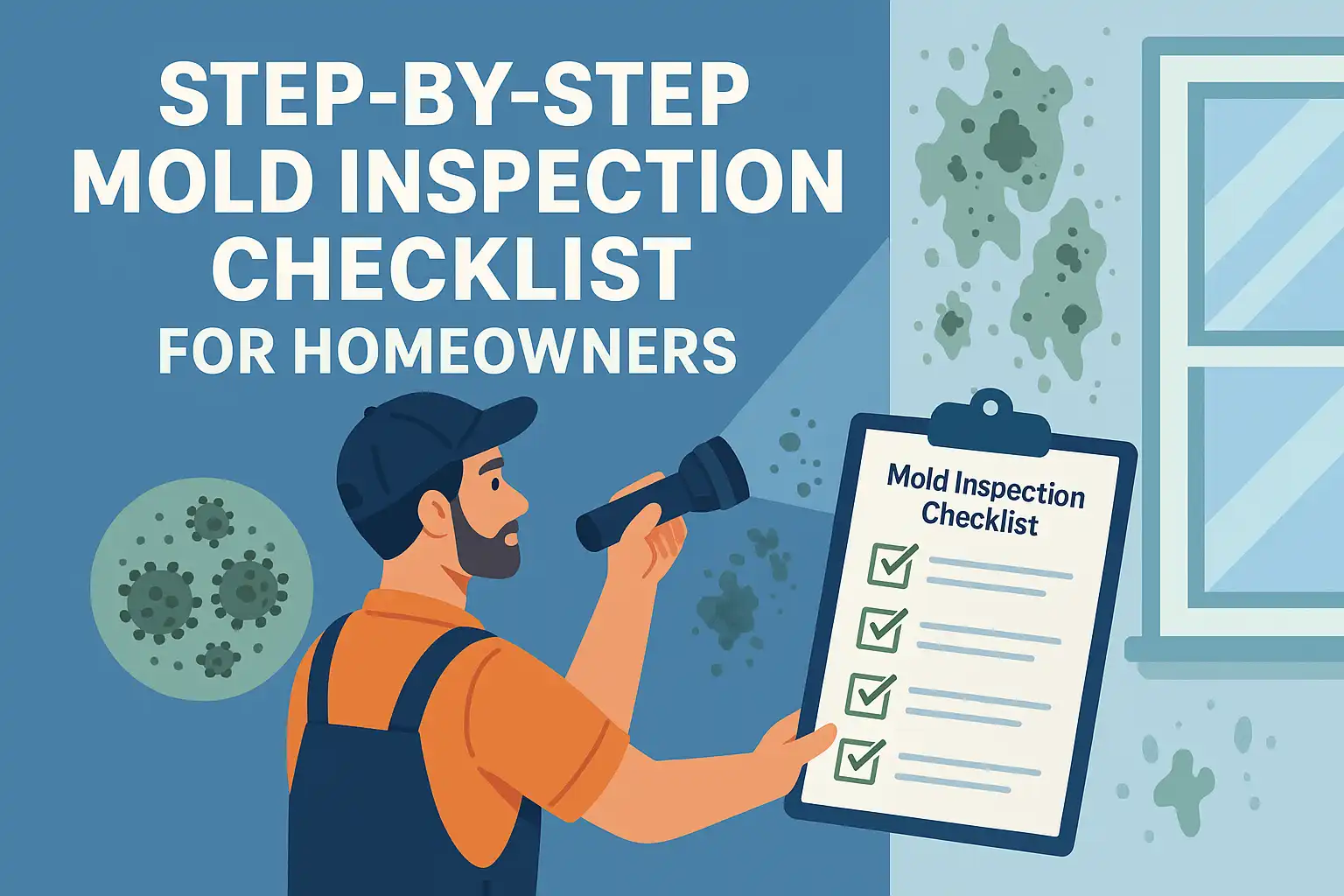Mold Removal vs Mold Remediation: What’s the Difference & Which Do You Need?
Mold is one of the most persistent threats to indoor air quality in the United States. It doesn’t just stain walls or create musty odors. It damages building materials, weakens structures, and poses serious health concerns for families and businesses. Yet many people confuse mold removal with mold remediation, assuming both mean the same thing.
The truth is they are very different. Mold removal usually refers to cleaning visible mold growth on affected surfaces. Mold remediation is a much more detailed mold removal process that addresses the root cause, fixes underlying issues, and prevents future mold growth. Knowing the main difference is the first step to solving mold issues properly.
This guide breaks down what each process involves, when to use them, and why choosing the right solution matters. We’ll cover mold inspection, the risks of mold exposure, the dangers of toxic mold, cost comparisons, DIY mold cleaning vs professional mold remediation services, and proven strategies for long-term protection. By the end, you’ll know which next step is right for your home or business, and how to safeguard your property against further damage and recurring mold colonies.
Understanding Mold – The Basics Before We Compare
What Is Mold and Why Does It Grow Indoors?
Mold is a living organism that belongs to the fungi family. It grows by releasing microscopic mold spores that float through the air until they land on organic material. When those spores find damp areas, porous materials, or affected surfaces with a steady source of moisture, they begin to form mold colonies.
The first place mold often appears in a house is where water damage exists. You might see patches on ceiling tiles, stains on drywall, or black spots in air ducts and the HVAC system. These contaminated areas are not just cosmetic problems. They signal the start of a mold infestation that, if ignored, spreads quickly to mold-infested materials like carpets, insulation, and building materials.
Without early mold mitigation, spores travel through the air and settle in new locations. That’s why a thorough inspection and Mold Damage Assessment are critical before any cleaning begins. Identifying the underlying causes is the first step in preventing future growth.
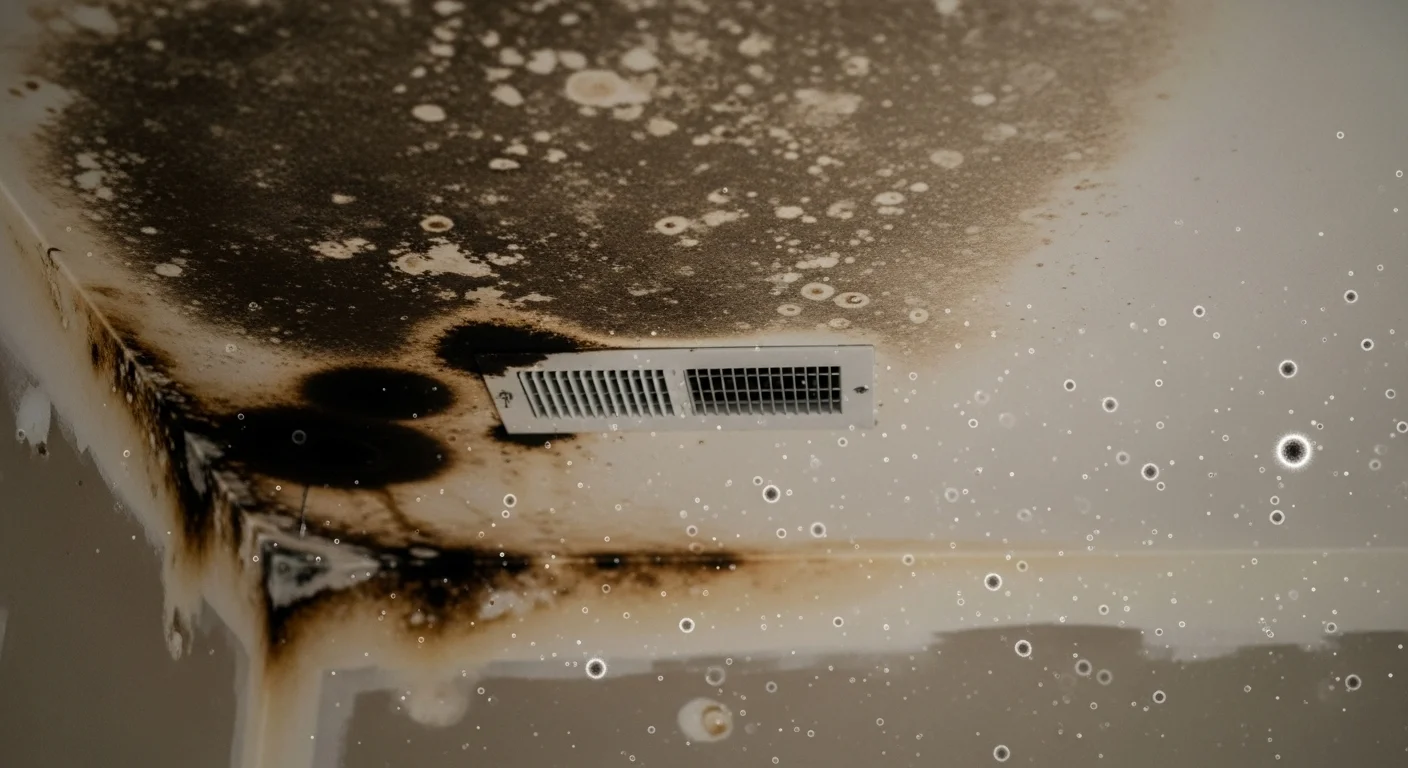
Health Effects of Mold Exposure
Breathing airborne mold spores or touching affected materials can cause allergic reactions, allergy symptoms, and serious respiratory issues. Many people experience musty smells or irritation first, but long-term contact leads to more severe health problems. The CDC and EPA warn that toxic mold can trigger asthma attacks, sinus infections, and even neurological symptoms in extreme cases.
Children, older adults, and people with weak immune systems are more vulnerable. Those with asthma or existing health concerns may see symptoms worsen when exposed to dangerous mold. Short-term exposure often leads to coughing, watery eyes, and skin irritation. Long-term exposure creates chronic illness and increases the chance of structural and indoor air quality problems in your home.
Because mold can spread beyond visible mold growth, we recommend Air Quality Testing and mold testing as part of the mold inspection process. These steps help identify underlying issues, measure contamination levels in square feet, and guide the next step in treatment.
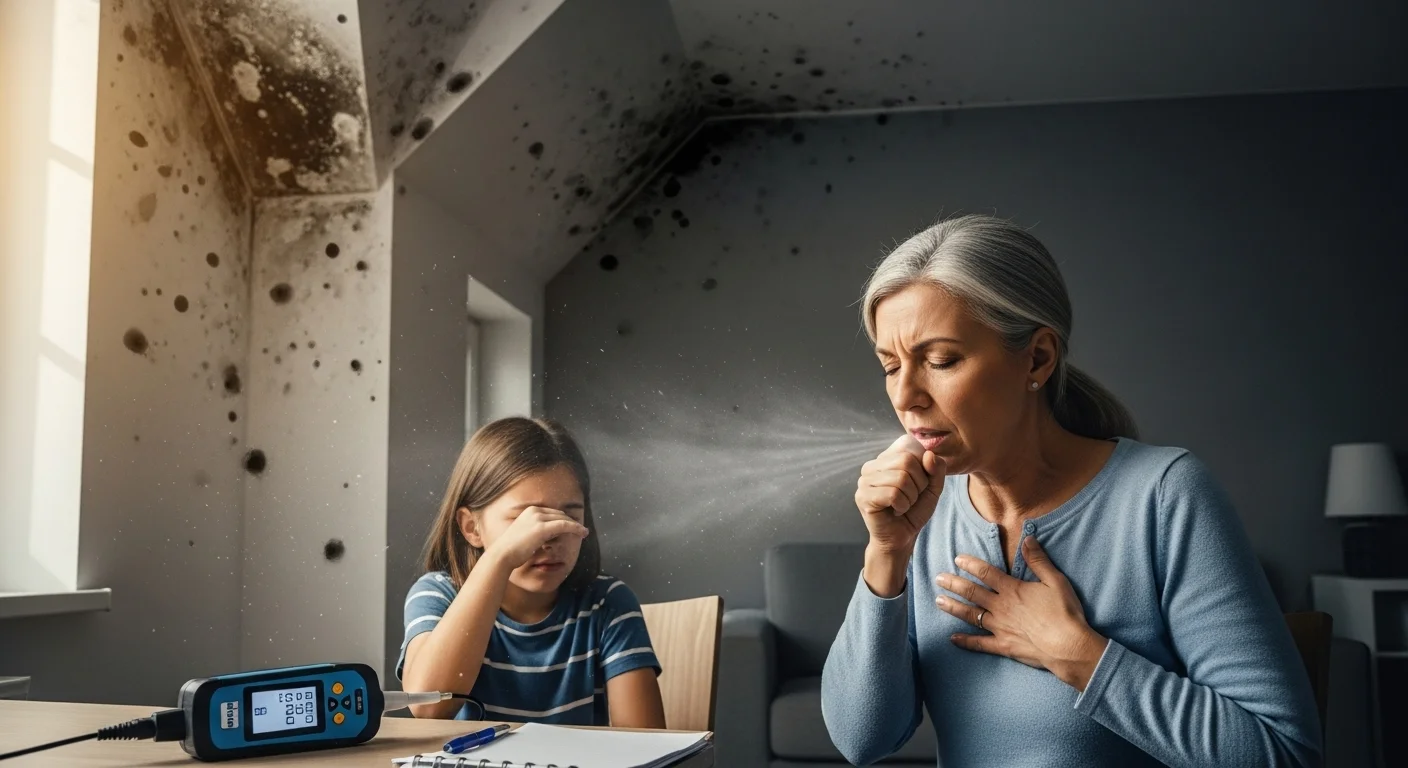
What Is Mold Removal?
Mold removal refers to the mold cleaning process where visible spots are scrubbed or wiped away from affected surfaces. This often includes using cleaning agents like vinegar, hydrogen peroxide, or bleach-based solutions on surface-level mold problems.
The goal is to remove visible mold growth from non-porous materials such as tile, glass, or metal. Many homeowners turn to a basic mold removal service as a first step when they notice musty odors or discoloration on walls.
While this approach can make a space look cleaner, it does not eliminate microscopic mold spores that may still circulate in the air or cling to nearby organic material. Mold removal is limited to what you can see on the outside. The underlying causes—like moisture sources and hidden mold contamination—remain untouched.

Is Mold Removal Effective?
On its own, mold removal is rarely a long-term solution. Scrubbing surfaces only addresses the symptom, not the root cause. For example, if you wipe down mold on ceiling tiles but don’t fix the water leaks above them, the mold will regrow. The same applies to bathrooms, basements, or damp areas where moisture lingers.
Because spores spread easily through the air, even small cleaning jobs can release more airborne mold spores, making the problem worse. Without Moisture Control, air filtration devices, and containment measures, removal becomes a temporary fix. It might reduce the musty smell, but the chance of mold regrowth remains high.
When Is Mold Removal Appropriate?
Mold removal is most effective for surface-level growth on non-porous materials. This includes tiles, countertops, bathtubs, glass, and sealed wood. It can also be useful for early-stage growth in damp areas before mold has spread deep into porous materials like drywall, carpet, or insulation.
If the mold outbreak is less than 10 square feet, the EPA suggests that homeowners may attempt removal themselves using proper ventilation, protective gear such as N95 masks, gloves, and goggles, and safe cleaning agents. However, if the mold has spread into mold-infested materials, contaminated air ducts, or the HVAC system, removal alone is not enough. At that point, calling professional service providers is the safest next step.
What Is Mold Remediation?
Mold remediation goes beyond surface mold cleaning. It is a structured and detailed process that identifies underlying causes, contains contaminated areas, removes mold-infested materials, and restores indoor air quality. Unlike simple removal, remediation addresses the root cause of the problem.
It targets both visible mold growth and microscopic mold spores that circulate through the HVAC system and air. The goal is not only to eliminate existing mold but also to prevent future mold growth by correcting moisture sources.
The Professional Mold Remediation Process (Step by Step)
A certified mold remediation specialist or mold remediation expert follows strict industry standards to ensure thorough cleanup and safety. The process usually includes these steps:
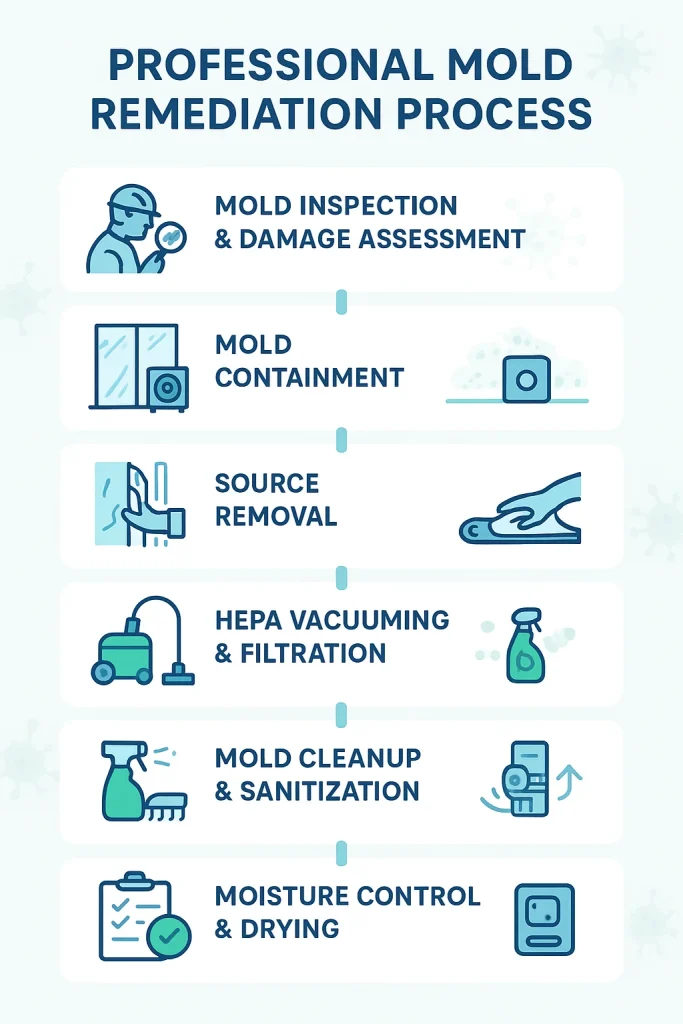
When Is Mold Remediation Necessary?
Remediation becomes essential when mold spreads beyond surface-level problems. It is also required when toxic mold such as Black Mold develops or when large square feet of contamination exists. If mold removal service fails and mold regrowth occurs, remediation is the next step.
Remediation is also critical for commercial buildings, schools, and rental units, where mold colonies may affect large groups of people. In these cases, professional mold remediation services protect occupants from respiratory issues, allergic reactions, and long-term health problems.
Can Mold Come Back After Remediation?
Yes, mold can return even after professional remediation if the underlying causes remain. Water leaks, high humidity, or poor ventilation create conditions for a new mold outbreak. Even the best mold remediation experts cannot guarantee results if the source of moisture is not corrected.
To reduce risks, homeowners should schedule routine inspections, maintain Moisture Control, and invest in proper ventilation. Using air filtration devices and HEPA filters in the HVAC system also lowers spore levels. Preventive maintenance is the final step in ensuring a clean, healthy living space.
Mold Removal vs Mold Remediation – Key Differences
Below is a clear breakdown of the Key Differences:
| Aspect | Mold Removal | Mold Remediation |
| Definition | Surface-level mold cleaning using scrubbing or cleaning agents to wipe away visible mold growth. | A full mold removal process that includes thorough inspection, Mold Containment, source removal, and preventive measures. |
| Scope of Work | Treats only affected surfaces and ignores underlying causes. | Treats both existing mold and underlying issues, including moisture sources and contaminated areas. |
| Effectiveness | Temporary. Mold regrowth often occurs if a source of moisture remains. | Comprehensive. Fixes root cause and improves indoor air quality for the long term. |
| Health Impact | May reduce odors but doesn’t stop airborne mold spores from spreading, leaving risks of allergic reactions and respiratory issues. | Protects occupants from toxic mold, mold colonies, and long-term health problems through proper cleanup and HEPA vacuuming. |
| Safety | DIY possible for small, surface-level patches under 10 square feet with protective gear. | Requires professional mold remediation services using air scrubbers, HEPA filters, and certified equipment. |
| Standards & Certifications | No formal standards. Anyone can attempt it. | Conducted by licensed mold remediation experts following IICRC and EPA guidelines. |
| Cost Range | Lower upfront cost. May lead to further damage if mold outbreak spreads. | Higher initial cost but prevents future growth, structural damage, and expensive repairs. |
| DIY vs Professional | Safe only for surface-level jobs with small affected areas. | Requires a professional service with experience, physical barriers, and air filtration devices. |
Why This Comparison Matters
Choosing mold removal when remediation is needed can make problems worse. Wiping down mold in your home may hide the issue for a while, but spores in air ducts, mold-infested materials, and the HVAC system will keep spreading. A professional mold remediation specialist not only restores affected materials but also improves indoor air quality, prevents mold contamination, and protects against future mold growth.
Costs of Mold Removal vs Mold Remediation
The cost of addressing mold in your home depends on the size of the problem, the type of mold present, and the affected areas. While mold removal service may seem cheaper. Professional mold remediation services cost more upfront but provide long-term solutions that protect your health, property, and finances.
Mold Removal Costs
For small surface-level outbreaks, removal can range from $300 to $1,000. This typically covers cleaning with EPA-approved cleaning agents, wiping affected surfaces, and limited Mold Cleanup. Jobs under 10 square feet may even be safe as DIY if handled with protective gear like N95 masks, gloves, and goggles.
Mold Remediation Costs
Professional mold remediation services usually range from $1,500 to $6,000 in the United States. Large infestations or cases involving toxic mold, mold-infested materials, or contaminated HVAC systems may cost $10,000 or more. The price includes a thorough inspection, Mold Damage Assessment, Mold Containment with physical barriers, removal of contaminated areas, HEPA vacuuming, and the use of air scrubbers and air filtration devices. It also covers drying and Moisture Control to stop future mold growth.
Areas in Homes & Businesses Most Prone to Mold in Tallahassee
Mold thrives wherever moisture sources and organic material meet. In homes, the first place mold often appears is in damp areas such as bathrooms, basements, and kitchens. Leaks under sinks, standing water near bathtubs, or condensation on windows can lead to visible mold growth on walls, grout, and ceiling tiles.
The HVAC system is another common trouble spot. Air ducts collect dust, pollen, and moisture, creating perfect conditions for mold colonies to spread. Without routine maintenance, spores move through vents and contaminate every room. Installing HEPA filters and scheduling air filtration devices or duct cleanings help reduce this risk.
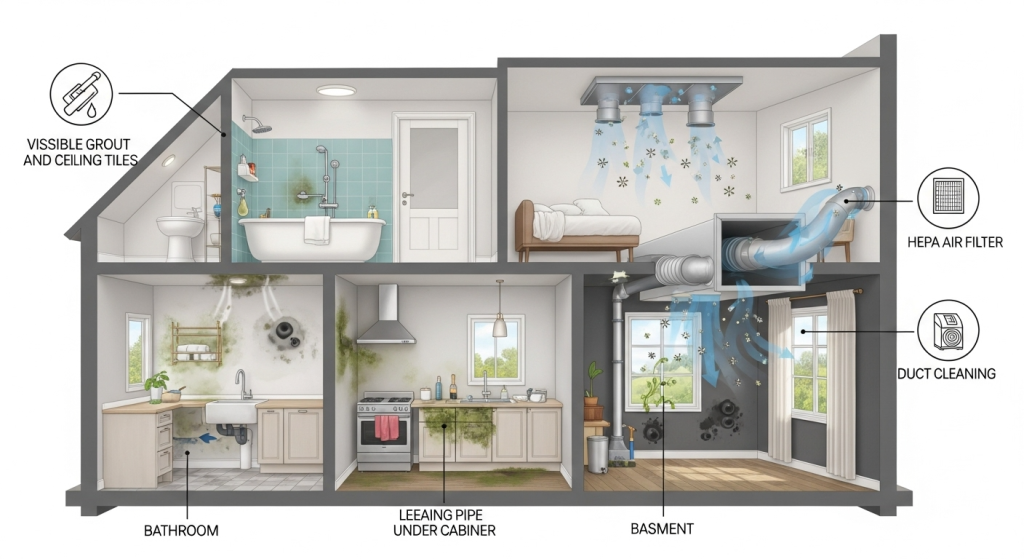
In businesses and rental properties, mold infestation often develops in affected areas like crawl spaces, storage rooms, and ceiling voids. Commercial building materials such as carpets, drywall, and insulation are highly porous materials, meaning they absorb water quickly and become mold-infested materials after leaks or flooding.
Common Types of Mold Found Indoors
All molds are not the same. Different species grow in different affected areas and present unique risks to your health and property. A thorough inspection and mold testing help identify the type of mold present, since treatment may vary. Below are the most common kinds you’ll find in homes and businesses across the United States.
Stachybotrys (Black Mold)
Often called “toxic black mold,” Stachybotrys chartarum grows on porous materials like drywall, insulation, and carpets. It thrives in damp areas caused by water leaks or flooding. Black mold releases airborne mold spores that trigger severe respiratory issues, allergic reactions, and even neurological health problems.
Aspergillus
A common household mold, Aspergillus can grow on organic material such as food, dust, or fabrics. It spreads quickly through air ducts and the HVAC system, releasing microscopic mold spores. While some strains are less harmful, others produce mycotoxins that cause allergy symptoms, asthma, and lung infections, especially in people with weakened immune systems.
Penicillium
Recognizable for its blue-green color, Penicillium grows on affected materials like carpets, wallpaper, and insulation. It prefers damp areas with poor proper ventilation. Exposure may lead to allergic reactions and sinus infections. Because it spreads fast, a small mold outbreak can contaminate large square feet of building materials in little time.
Cladosporium
Cladosporium grows on both non-porous and porous materials, including ceiling tiles, wood, fabrics, and even HVAC coils. It tolerates cooler environments, so you may find it in basements, attics, or around air conditioning units. While less toxic than black mold, exposure still causes respiratory issues, skin irritation, and allergy symptoms.
Identifying the type of mold present is the first step in proper mold cleanup and prevention. Correct identification ensures the use of safe cleaning agents, targeted mold mitigation, and protection against future mold growth.
Preventing Mold After Removal or Remediation
Eliminating mold is only half the battle. The final step is preventing future mold growth by correcting the underlying causes. Without prevention, even after a full mold removal process or professional mold remediation services, mold can return and cause further damage.
Moisture Control & Ventilation
Moisture is the main driver of mold issues. Repair all water leaks immediately and monitor indoor humidity. Keeping humidity below 50% stops mold colonies from forming. Use dehumidifiers in damp areas like basements and bathrooms, and install exhaust fans for proper ventilation. Good airflow prevents musty odors and stops mold regrowth before it starts.
HVAC Maintenance
Your HVAC system plays a major role in maintaining indoor air quality. Replace HEPA filters regularly and schedule air ducts cleaning. Adding portable air filtration devices or permanent air scrubbers can help capture airborne mold spores. Regular servicing also prevents mold from contaminating coils, drip pans, and insulation inside the system.
Building Materials & Repairs
Choose mold-resistant building materials when repairing affected areas. Options like mold-resistant drywall, paints, and waterproof coatings protect against mold contamination. Remove and replace mold-infested materials such as ceiling tiles, carpets, or insulation. By addressing affected materials quickly, you stop spores from spreading into surrounding organic material.
Routine Inspections & Early Detection
Schedule routine mold inspection and Mold Damage Assessment at least once a year, especially after storms or flooding. A thorough inspection helps detect underlying issues before they lead to an outbreak. Early action keeps mold in your home under control and reduces the risk of serious health problems like respiratory issues or allergic reactions.
Expert Tips for Hiring a Mold Professional
Choosing the right mold remediation specialist is just as important as the mold removal process itself. A qualified contractor ensures that underlying issues are fixed. Here are expert tips to help you select the best professional.
Certifications to Look For
Always check if the company and technicians are certified. Look for IICRC (Institute of Inspection, Cleaning and Restoration Certification) or state licensing, which ensures proper training in Mold Containment, Mold Cleanup, and safe handling of mold-infested materials. Certified mold remediation experts use approved cleaning agents, HEPA vacuums, HEPA filters, and air scrubbers to capture airborne mold spores and protect affected areas.
Questions to Ask
Before hiring, ask about their process. A reliable contractor will:
- Perform a thorough inspection and Mold Damage Assessment.
- Identify the root cause and correct moisture sources.
- Explain each next step, from setting physical barriers to using air filtration devices.
- Provide documentation for insurance claims in case of structural damage or further damage.
Red Flags to Avoid
Be cautious of companies that promise complete mold removal with a single fogging treatment. Mold cannot be fully eliminated because microscopic mold spores exist naturally in the air. Quick-fix solutions that ignore source of moisture or skip Moisture Control almost guarantee mold regrowth. Avoid contractors without insurance, no clear process, or vague guarantees about long-term solutions.
FAQs
Is mold remediation the same as mold removal?
No. Mold removal focuses on surface-level mold cleaning, using cleaning agents to wipe away visible mold growth from affected surfaces. Mold remediation, on the other hand, is a comprehensive mold removal process. It includes thorough inspection, Mold Damage Assessment, Mold Containment, removal of mold-infested materials, and correcting underlying issues such as moisture sources. Remediation is a long-term solution that protects indoor air quality and prevents future mold growth.
Can mold be fully eliminated?
No professional can guarantee complete mold removal, because microscopic mold spores exist everywhere in the environment. The goal of professional mold remediation services is to reduce spore levels indoors to a safe range through HEPA vacuuming, air scrubbers, and proper Moisture Control.
How long does mold remediation take?
The time frame depends on the size of the contaminated areas. Small jobs may take one to three days, while large infestations covering hundreds of square feet of affected materials can take a week or more. The process includes inspection, air filtration devices, removal, mold cleanup, drying, and post-remediation verification testing to confirm safety.
Do air purifiers help with mold?
Yes, but only certain types. Units with HEPA filters and high-quality air filtration devices capture airborne mold spores and improve indoor air quality. However, purifiers cannot clean mold-infested materials or fix the source of moisture. They should be used alongside professional mold mitigation.
What kills 100% of mold?
No product can kill every spore, but EPA-approved cleaning agents like hydrogen peroxide and antifungal sprays remove mold from surface-level affected areas. For toxic mold or hidden infestations inside porous materials, only professional service with mold remediation specialists can ensure safe removal and prevent mold regrowth.
Can mold grow back after remediation?
Yes, if the underlying causes are not addressed. Water leaks, poor ventilation, or high humidity will lead to mold regrowth even after professional cleanup. That’s why Moisture Control and routine thorough inspection are the next step after remediation.
How do I test for mold in the air at home?
DIY kits exist, but they’re unreliable. Accurate results come from professional Air Quality Testing and mold inspection. Experts use air sampling, swab tests, and moisture mapping to locate hidden mold colonies and underlying issues.
What are signs of mold sickness?
Mold exposure can cause allergic reactions such as sneezing, itchy eyes, and skin rashes. Long-term exposure may lead to respiratory issues, asthma attacks, and even neurological health problems. If you notice musty odors, fatigue, or worsening allergy symptoms, seek medical advice and arrange a mold inspection.
What’s the success rate of professional remediation?
When done by certified mold remediation experts, the success rate is very high. With proper Mold Containment, HEPA vacuums, air scrubbers, and moisture correction, most homes stay mold-free as long as future growth risks are managed.
Is a house safe to live in after remediation?
Yes, once post-remediation verification confirms the space is clear of airborne mold spores and contaminated areas are restored. Certified professionals ensure affected materials are replaced, indoor air quality is safe, and mold mitigation steps are complete.
Can mold spread during remediation?
If handled improperly, yes. Without physical barriers, air filtration devices, and Mold Containment, spores can move into new affected areas. That’s why only professional mold remediation services with trained crews and the right equipment should handle large jobs.
What are neurological symptoms of mold exposure?
Prolonged contact with toxic mold can affect the nervous system. Symptoms may include headaches, memory problems, difficulty concentrating, and mood changes. These risks highlight why dealing with dangerous mold quickly is critical for both health and safety.
Conclusion – Mold Removal vs Remediation: Which One Do You Need?
Understanding the main difference between mold removal and mold remediation helps you take the right action at the right time. Mold removal is a quick first step that focuses on surface-level cleaning. It may be enough for small affected areas under 10 square feet.
Mold remediation, on the other hand, is a long-term solution. It involves a thorough inspection, Mold Damage Assessment, Mold Containment, removal of mold-infested materials, and restoring clean air through HEPA vacuums, air scrubbers, and HEPA filters.
Certified mold remediation specialists correct the source of moisture, prevent future mold growth, and ensure your property passes post-remediation verification. The final step is prevention. Whether in your home, rental unit, or business, ongoing Moisture Control, proper ventilation, and routine mold inspection are the keys to keeping your property safe.
If you notice musty smells, affected materials, or signs of mold contamination, don’t wait. Contact a licensed professional mold remediation service. Acting quickly protects your property, prevents further damage, and safeguards your family’s health from the risks of dangerous mold.
Need help?
Speak with a trusted mold remediation expert in your area today. The sooner you take action, the sooner you restore safety, comfort, and peace of mind.
